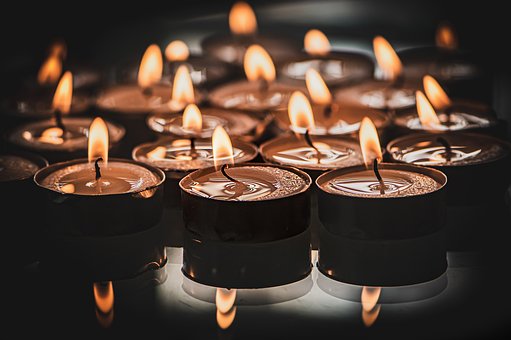The cross : How do you analyze the “Virginia” phenomenon? Is it unique in France or is it part of a larger movement?
Father Guillaume Chevallier: We are experiencing a large-scale test of faith. Where is God’s providence in international conflicts? In the forced marches towards an ultra-liberal and permissive society? In priestly defections or the virtual disappearance of consecrated life? This diagnosis can lead Christians to a certain pessimism. People who present themselves as messengers from heaven bring both a confirmation of this diagnosis and an impulse to spiritual mobilization, through visions, locutions and prophecies.
The “prophets”, true or false, have always existed, but the current peculiarity is that their followers, in some cases themselves, come into contact with each other and create what they call the “prophetic consensus”, whereby their messages reinforce each other. France, Canada, Italy, Ireland currently seem to be environments more favorable to the emergence of lay figures or priests who give conferences, publish their revelations (sometimes live), found networks of groups of prayer. They attract into their orbit other movements with various inspirations (royalism, fundamentalism, conspiracy) without blending in with them.
Are there recurring traits in these seers and in their messages?
PGC: We constantly find the attestation that God, or Mary, or the Archangel Saint Michael manifests himself in an exceptional way in a time of distress to comfort the little ones, to create a network of souls who, while suffering from these situations, want to keep the Christian ideal high. The themes of the end times, of the urgency of conversion, of spiritual awakening are always present.
Most often explicitly, we also find the theme of the sins of the men of the Church, of a misguidance which goes so far as to touch the pope or the bishops and the priests. Its corollary is the introduction of a divide in the Church between those who are “aware” and those who are not, between the faithful and the pastors – which encourages the practice of discretion, if not concealment.
We also find a certain conception of Marian theology, where the Virgin “merges” with Christ (the united hearts of Jesus and Mary, nuptial language, co-redemption). Formulas and traditional titles, or found in the pen of the saints, are reused, but without the nuances that are essential when considering the relationship between God and his creature. The theology of Saint John Eudes, for example, which is expressed in symbolic terms, must not be forced or materialized; likewise, certain expressions of Saint Louis-Marie Grignion de Montfort or Saint Maximilian Kolbe. Under cover of magnifying the grace and mercy of God, the analogy and the correct understanding of the relationship between God and human freedom are crushed.
What criteria of discernment can be used?
PGC: It is up to the bishops to discern the inspirations, especially when they have mystical pretensions. The Bride of Christ is the Church, and she must say when she recognizes the voice of the Bridegroom and when she does not. “Beware of false prophets who come to you in sheep’s clothing, while inside they are ravenous wolves” (Mt 7.15); “Trust not to any inspiration, but examine the spirits to see if they are of God, for many false prophets have spread throughout the world” (1Jn 4,1): Christ and the Apostles gave warnings which have not lost their relevance. So don’t be naive.
The fake mystics speak more than the real ones: they are often prolific in words or graphomaniacs. Material for discernment thus abounds, and one can examine without hesitation their doctrine in the light of common sense and the tradition of the Church.
They also appreciate the singularity: they create (or “receive”) a devotion which presents itself not as a partial light on the infinite mystery of God but as an exclusive key to reading. They promote a particular act of consecration, often conceived first as a way of sustaining the baptismal life, then more or less explicitly as a necessary practice. Those who adopt it more or less consciously form an elite.
One of the corollaries of the publication of the messages will be to place the seer de facto at the center of attention – which he naturally rejects. Loyalty to him becomes the criterion of “revival.” We can regret it, but we must consider as suspect a priori a person who publishes his visions and his locutions, thus self-attesting the authenticity of his “revelations”, who stages himself or who arouses and organizes (by sometimes defending) a movement in which the authority of the messages and of the messenger will, in fact, be the primary reference.
The starization of a person is not inevitable: many saints have successfully resisted it! Is there not something indecent, although now frequent, in publishing his notebooks and his accounts of mystical experiences? The Fathers of the desert enacted clear principles: they impose to place everything in the hands of the Church and to observe discretion, under pain of being the plaything of the imagination, of spiritual vanity, of pride. , of the demon. The latter has a well-known agenda: first to open false paths of union with God or to discredit the mystical life (when the faithful discover that they have been deceived, they are tempted to throw the baby away with the bath water). Then foment partisan divisions. To always divide men from the living and true God, and the faithful among themselves.
We wish to say thanks to the author of this write-up for this remarkable content
“False mystics speak more than the real ones”
You can find our social media profiles here as well as other related pages herehttps://nimblespirit.com/related-pages/

